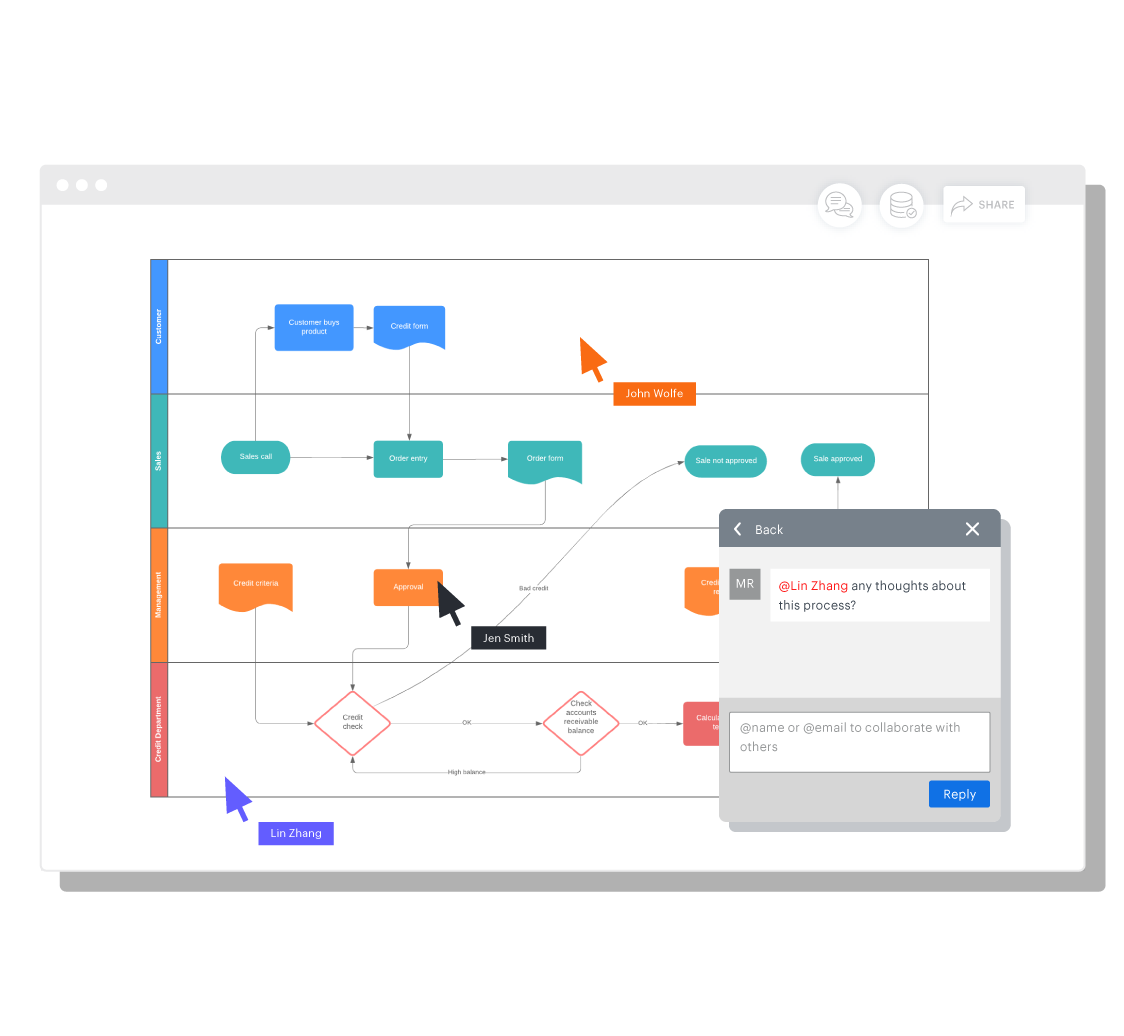Over the past 10 years, the number of people working primarily from home has grown 115%, and remote work has grown faster than any other commute method. In fact, according to a recent report from Global Workplace Analytics, remote work as grown by 173% since 2005.
Obviously, there is a strong case for companies to better accommodate remote workers. It’s a trend that is growing rapidly and the ability to work remotely is becoming a must-have for some employees—74% of office workers in North America say they would change jobs based on the employer’s remote working policy. And the benefits aren’t limited to the flexibility it affords individuals—having remote workers provides benefits for businesses overall as well.
Benefits of remote work
Attract top talent
Offering remote work greatly expands your talent pool. According to CEO of Upwork Stephane Kasriel, “Companies that refuse to support a remote workforce risk losing their best people and turning away tomorrow’s top talent.” You are no longer limited to a specific geographic area—instead you can go anywhere and find specialized professionals. As a result, you are better able to attract top talent, and rather than settling for the best that is available, you can find the perfect fit. This benefit is especially valuable for companies located in more competitive areas that struggle to even find enough candidates to fill certain roles.
As you recruit from a larger pool, you also have the opportunity to increase diversity at your company. Whether you hire from around the world or just various regions of a country, you will benefit from the different perspectives and ideas people bring.
Reduce employee turnover
According to the 2017 State of Remote Work report by Owl Labs, companies who offer remote work experience a 25% lower turnover rate, indicating that offering remote work is a valuable retention tool for companies. The value becomes more apparent when considering that replacing highly trained employees can cost twice as much as the employee’s annual salary. The flexibility to work remotely decreases pressures that often cause employees to leave their jobs, such as commutes, physical conditions, or life events.
Cut down on costs
A typical business would save $11,000 per person per year by offering employees the ability to work remotely. Remote workers reduce the amount of real estate you need, which means you’re pouring significantly less money into renting or buying office space. A remote workforce also cuts down on the costs involved in keeping an office operating, such as computers, phones, electricity, heating, and air conditioning.
Improve productivity
A Gallup poll found that workers who spent 60-80% of their time away from the office had the highest rates of engagement. There are multiple factors that can contribute to this increased productivity. Stanford professor Nicholas Bloom conducted a study that revealed that work-from-home employees work a true full day (or more) rather than being late to the office or leaving early multiple times a week. The study also found working remotely to be less distracting, with employees finding it much easier to concentrate at home. In addition, employees can work when they are most productive, even if that means late at night or early in the morning, and they tend to work extra hours per week. Finally, employees don’t have to deal with long commutes—in cities such as New York or San Francisco, commuting can add 6-15 hours onto the work week.
If there is so much to be gained by having a remote workforce, why isn’t everyone doing it? While the benefits are real, the potential challenges are as well. With workers scattered across the globe, companies can face complications, especially when it comes to communication, culture, and employee performance. However, there are strategies that can minimize the challenges and maximize the benefits of a remote workforce.

Looking for a collaborative workspace to bring everyone together and work in real time? See how Lucidchart is the perfect remote work solution for team productivity and alignment.
Find out moreChallenges of remote work
Challenge #1: Maintaining good communication
In a study by Zogby Analytics, remote workers reported a lack of information from management and timeliness of the information as the largest obstacles of working from home. It can be challenging to coordinate teams made up of employees located across time zones, not to mention the added difficulty of communicating without the tone and body language so crucial for understanding. Communication issues can negatively affect not only work progress but also employee morale—so communication needs to be even more top of mind when managing a remote workforce of any size.
Solutions
Take advantage of cloud-based collaborative technology: Revisit your tech stack with remote needs in mind. Add tools such as Slack, Skype, and Google Hangouts to facilitate constant and open two-way communication, and try focusing on these more collaborative channels rather than on email. Cloud-based project management software such as Trello or Asana can also help scattered teams stay on the same page and work together effectively—just remember to make sure everyone is using the same applications.
Establish regular communication: In a study by social scientists Joseph Grenny and David Maxfield, nearly half of respondents said the most successful managers check in frequently and regularly with remote employees. Whether it’s daily, weekly, or bi-weekly, managers should set a consistent cadence for contact with employees—and it’s best to err on the side of over-communicating. Managers should always be attentive and respond quickly to remote workers so that they feel they have the same support as on-site employees.
Schedule designated work times: It can be hard for employees to work together when they all start and end work at different times, depending on their respective time zones. It can be helpful to schedule specific blocks of time during which all employees need to be online. When scheduling meetings, find a time that falls within everyone’s workday, and if such a time is impossible, record meetings for those who can’t attend.

Use these 3 strategies to make the most out of your remote meetings.
Find out moreChallenge #2: Creating a culture
While employees do enjoy the flexibility of remote work, it doesn’t mean they don’t enjoy being part of an office culture. Remote workers have fewer opportunities to develop that sense of camaraderie with colleagues, and they have less visibility into overall company missions and values. As a result, some employees experience isolation, loneliness, and dissatisfaction with their roles. While not an easy task, it’s important to adopt a work-from-home culture that helps remote workers feel that they are a part of the larger company culture as much as possible.
Solutions
Provide opportunities for colleagues to connect: Try to have remote workers come into the office at least every once in a while so they can start building relationships, or have everyone meet up at an industry conference. Ensure every office meeting includes dial-in and video conference info, and hold frequent virtual meetings to increase face time among the team.
Organize team-building activities: Hold team activities when remote workers come into the office. If they can’t come in, try to get creative. For example, the team at Trello organizes events such as online trivia nights and coffee meetings to provide opportunities for informal interactions among colleagues.
Use social tools or your company intranet: Help remote employees stay up to date on the company culture by using social media or your intranet to share insights on the company mission and values, provide business updates, and recognize employee success.
Make collaboration a priority: Make collaborating just as much of a priority in the virtual environment as it is in the office. Group presentations, team research projects, and colleague-to-colleague mentoring can all help promote a collaborative environment.
Take advantage of the cloud: Cloud technology allows employees to access the information, tools, and content they need to get their jobs done, regardless of their location. Teams can work in real time on the same documents and give and receive feedback instantaneously.
Challenge #3: Tracking employee performance
It can be hard to monitor employee performance when your team isn’t physically in the office, especially for jobs that require employees to be engaged for a certain number of hours per day. But it’s also hard to find the right balance of checking in without becoming a resented micromanager. Yet another troubling scenario is when remote workers overcompensate for not being in the physical office by overworking, which can lead to burnout.
Solutions
Establish expectations: It’s crucial to outline clear expectations from the get-go when managing remote teams. Employees need to know exactly what is expected of them at all times and should have goals and metrics established. When armed with this knowledge, teams are happier and better able to live up to set expectations.
Use time-tracking and/or project management software: If necessary, time-tracking software can help you better understand what remote workers are doing throughout the day. It can also help motivate employees to stay on task and be accountable for how they spend their time. Cloud-based project management software helps everyone see where employees are at on specific projects and identify where help is needed.
Trust your employees: At the end of the day, flexible work arrangements are only possible if you trust your employees. Take your time in the hiring process to find team members you feel confident will succeed in a self-directed role. Look for qualities such as independence, initiative, and self-discipline.
Challenge #4: Maintaining security
The shift to remote work is often accompanied by a transition to t he cloud, opening the organization up to new security risks, leaks, breaches, and hacks. In fact, a 2018 Apricorn survey found that a third of organizations claim to have experienced a data loss or breach as a result of mobile working. Mike Hicks, VP of Strategy at Igloo Software, states, “The main security concern stemming from remote workers is the vast amount of online information sharing.” All communication is done online—there are no watercooler chats for remote workers.
Additional challenges arise with employee hardware—IT faces the challenge of managing and supporting mismatched devices running on different operating systems. In addition, remote workers often mix work and personal data on the same device and apps, which can lead to unintentional exposure to friends and family and online attacks.
Solutions
Reduce points of vulnerability: Make sure employees keep business-sensitive documents in one secure cloud location rather than on individual laptops. Have a central platform where data and information is stored rather than having it spread across inboxes and hard drives. This practice also ensures employees always use the most up-to-date documentation.
Establish secure connections: Remote workers are more at risk for internet attacks since they often work from public Wi-Fi. Make sure employees connect through a virtual private network to keep all internet traffic secure.
Enforce password safety: It only takes one weak password to wreak havoc on your company’s security, so be sure to constantly reinforce the importance of secure passwords and remind employees of password best practices. You might also want to implement two-factor authentication.
3.9 million Americans now work from home at least half the time, and that number is only expected to grow. That growth is an exciting opportunity for companies and provides a win-win situation with the many benefits it offers for both employers and employees.

Create a work-from-home culture that actually works and learn how to better support employees working from home.
Find out moreAbout Lucidchart
Lucidchart, a cloud-based intelligent diagramming application, is a core component of Lucid Software's Visual Collaboration Suite. This intuitive, cloud-based solution empowers teams to collaborate in real-time to build flowcharts, mockups, UML diagrams, customer journey maps, and more. Lucidchart propels teams forward to build the future faster. Lucid is proud to serve top businesses around the world, including customers such as Google, GE, and NBC Universal, and 99% of the Fortune 500. Lucid partners with industry leaders, including Google, Atlassian, and Microsoft. Since its founding, Lucid has received numerous awards for its products, business, and workplace culture. For more information, visit lucidchart.com.
Related articles
How to use Lucidchart for remote sprint planning
Lucidchart makes it possible for your team to complete each phase of your two-week sprint remotely. See how your team can plan and carry out your sprint with real-time collaboration, data linking, Smart Containers, and sprint planning templates.
A guide to successfully establishing BYOD and CYOD policies
Thinking of adopting BYOD or CYOD policies? Use this guide to help you prepare for all the risks and challenges commonly encountered when adopting a "bring your own device" policy as well as the advantages.

